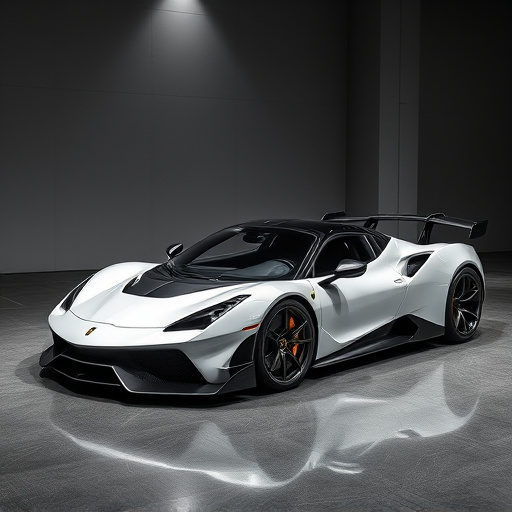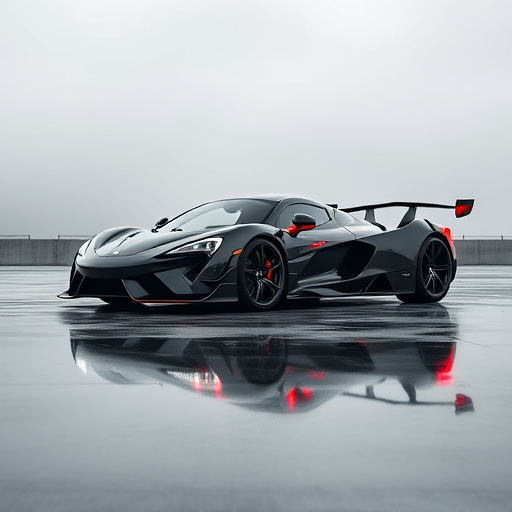When comparing air intake system prices, prioritize long-term value over initial cost. A higher-priced system may offer superior performance, durability, fuel economy, and horsepower, while cheaper alternatives could lead to frequent replacements and increased maintenance. Looking beyond the price tag, considering factors like design quality, material science, and maintenance practices is crucial for making informed decisions that ensure the air intake system value over time. This approach not only prevents costly repairs but also enhances vehicle longevity and resale value.
In today’s market, making purchases based solely on initial cost can lead to short-sighted decisions. When considering an air intake system, understanding long-term value becomes crucial. This article guides you through a strategic approach, shifting from fleeting considerations to long-term investment. We explore factors influencing product longevity and delve into air intake system price comparison, uncovering hidden costs and potential savings over time. By examining case studies and implementing maximizing ROI strategies, you’ll be empowered to make informed choices that deliver lasting value.
- Understanding Long-Term Value: Beyond Initial Cost
- – The shift from short-term thinking to long-term investment
- – Factors influencing the longevity of products/systems
Understanding Long-Term Value: Beyond Initial Cost

When considering long-term value, especially in the context of an air intake system, it’s crucial to look beyond the initial cost. An air intake system is a significant investment for any vehicle, and its price comparison should not be the sole deciding factor. The true worth lies in understanding how it performs and lasts over time, contributing to the overall health and efficiency of your engine.
A higher-priced air intake system might offer advanced materials, precise engineering, and optimized design that can enhance fuel efficiency, increase horsepower, and reduce emissions. These features not only provide a better driving experience but also have long-term environmental and economic benefits. Conversely, cheaper alternatives may require frequent replacements or fail to deliver the promised performance, ultimately costing more in the long run through increased maintenance and lower fuel economy.
– The shift from short-term thinking to long-term investment

In today’s fast-paced world, where immediate gratification is often prioritized, shifting from short-term thinking to long-term investment strategies can be a game-changer for individuals and businesses alike. When considering significant purchases or decisions, such as investing in an air intake system, it’s crucial to look beyond the initial cost and focus on the value it will bring over time. Traditional pricing models often emphasize short-term gains, but a more sustainable approach lies in understanding the long-term benefits and potential savings. By comparing not just the prices of different air intake systems, but also their durability, efficiency, and maintenance costs, one can make informed decisions that offer true value.
This shift in perspective is particularly relevant when considering high-value investments like advanced automotive components. The air intake system, a vital part of any vehicle’s performance and fuel efficiency, should be viewed as an asset that contributes to the overall longevity and resale value of the vehicle. By opting for quality over quantity and choosing systems with proven long-term reliability, owners can avoid frequent replacements and the associated costs, ensuring consistent performance and potentially increasing the vehicle’s overall worth over time.
– Factors influencing the longevity of products/systems

The longevity of a product or system is influenced by a multitude of factors, each playing a critical role in its overall durability and long-term value. Among these, design quality stands out; intricately designed systems tend to be more robust against wear and tear, ensuring they retain their functionality over extended periods. Material science also comes into play, with advanced or high-quality materials often offering superior resistance to degradation, corrosion, and other environmental factors. For instance, an air intake system made from durable, resilient materials could significantly outlast its lower-grade counterparts, impacting the overall cost-effectiveness of the product in the long run.
Additionally, regular maintenance practices cannot be overlooked. Preventive maintenance routines, such as periodic cleaning, lubrication, and part replacement, can substantially prolong the lifespan of systems. In the context of an air intake system, for example, regular maintenance could prevent clogging issues, ensure optimal performance, and delay the need for costly repairs or replacements. Furthermore, factors like operating environment—including temperature extremes, humidity levels, and exposure to harsh chemicals—significantly affect longevity. Understanding these influences allows consumers to make informed decisions when comparing air intake system prices, ensuring they invest in products with proven long-term value.
When considering the long-term value of an air intake system, it’s essential to look beyond the initial price comparison. By shifting your perspective towards a sustainable investment approach, you factor in the system’s longevity and performance over time. Understanding that the cost of ownership extends beyond just the upfront expense allows for smarter decisions, ensuring your choice delivers optimal performance and maximum value for years to come.














